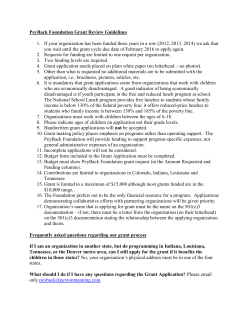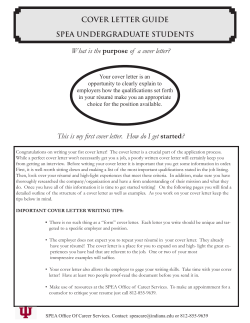
ADDERALL By: Christina H. Jagielski, M.P.H. and Jennifer E. Kelley,... INCIDENCE AND PREVALENCE THE DRUG
By: Christina H. Jagielski, M.P.H. and Jennifer E. Kelley, M.P.H., C.H.E.S., C.P.P. THE DRUG INCIDENCE AND PREVALENCE Adderall , a combination of Dextroamphetamine and Amphetamine, is a Schedule II substance that is used in the treatment of Attention Deficit/Hyperactivity Disorder (ADHD), Attention Deficit Disorder (ADD) and narcolepsy. Until recently, little distinction was made between Ritalin® and other drugs treating ADD or ADHD. Therefore, there is scant data about the incidence and prevalence of illicit use of Adderall®. However, there is a close relationship between Ritalin® and Adderall®; because Ritalin® (Methylphenidate) is also a medication prescribed for individuals (usually children) who have ADHD/ADD. One can therefore infer that rates of use might be similar. Indiana students in grades 6 through 1 have been surveyed on their use of Ritalin® (Methylphenidate) since 1998. All reported figures from the Indiana Prevention Resource Center’s Alcohol, Tobacco and Other Drug Use by Indiana Children and Adolescents survey indicate a decline in Adderall® use among students from 2002 to 2004, followed by an increase in 2005. There was an increase in annual use among students from 2.2 percent to 2.6 percent among 8th graders, and 3.3 percent to 3.8 percent among 12th graders between 2004 and 2005, respectively. The only category of students who reported a decline in annual use of Ritalin® are 6th graders with a decline of 0.1 percent between 2004 and 2005. Students in 10th and 12th grade reported Ritalin® use of above 3.3 percent, whereas those in 6th grade reported less than 1 percent use. In 2005 there was a significant increase in reported annual use among the students in 10th grade (4.3 percent), but a decrease among those in 12th grade (3.8 percent). The highest rates reported between 1998 and 2005 were in 2001 when 12th graders reported an annual use of 4.7 percent and 10th graders 5.3 percent. ® Adderall® in tablet form. Source: U.S. Enforcement Administration (2006). Drug APPEARANCE Manufactured by Shire Pharmaceutical Group, Adderall® is supplied in 5, 7.5, 10, 12.5, 15, 20, and 30 mg. tablets, and in the extended release form (Adderall XR®) capsules. On the street Adderall® or Adderall XR® are known as beans, bennies, black beauties, Christmas trees, dexies, double trouble, pep pills, speed and uppers, to name a few. USERS Data from the National Household Survey on Drug Abuse indicated that the percentage of 12- to 17year-olds who reported having abused stimulants at least once in their lifetime in 1999 (3.9 percent) was comparable to the percentage in 2000 (4.0 percent). When Adderall® is taken by an individual without ADD/ ADHD, it creates a stimulant-like effect by increasing focus and attentiveness, making this an attractive drug to abuse among teenagers. According to the National Institute on Drug Abuse, teenagers of middle- and upper-class socioeconomic status are most likely to abuse the drug by crushing and snorting the tablets. Some intravenous drug users combine heroin and the drug to intensify the effect. ACQUIRED Drugs such as Adderall® are legally prescribed for children and adults with ADHD/ADD and are easily available for non-medical use. The cost for illicit use of the drug can range between 2 to 20 dollars for a 20 milligram tablet. Adolescents may acquire the drug from peers, friends or family members who have legal prescriptions. In some cases they may steal from Percent of Students using ADDERALL® Ritalin Annual Use Among Indiana Adolescents: 19982005 6 4 2 0 1998 1999 2000 2001 2002 2003 2004 2005 6th 8th 10th 12th Source: The Indiana Prevention Resource Center (2006). medical dispensaries. EFFECTS When Adderall® is taken as prescribed (for the prescribed individual, at the prescribed dose and rate), the drug can be highly beneficial and non-addictive. However, when taken at a higher dose or for nonmedical use, it can lead to addiction and compulsive activity. Like other stimulant drugs, the non-medical use of Adderall® can have similar adverse effects such as restlessness, dizziness, tremors, euphoria, severe headache, a false sense of well-being and difficulty coordinating musculoskeletal movements. Other effects include insomnia (inability to fall or remain asleep), increased body temperature, irregular heartbeat, heart failure, fatal seizures, hostility and feelings of paranoia. Misuse of the drug can have a cocaine like effect when snorted or injected. The U.S. Food and Drug Administration (FDA) issued an alert on Adderall® and Adderall XR® in February, 2005. The FDA Alert was issued in response to the suspension of Adderall® from the Canadian market due to concerns over reports of sudden unexplained deaths (SUD). For more information visit the U.S. Food and Drug Administration website at: http://www.fda.gov. THE LAW While the use of Adderall® itself is not illegal when taken as prescribed, use without a prescription is a In order to decrease the non-medical use of Adderall®, adults, school officials and family members may want to consider the following: 1) medication supplies should be kept secure in a locked room, drawer or cabinet; 2) adults should not allow adolescent patients to selfadminister ADHD/ADD medication without suitable adult supervision; 3) children should be prohibited from carrying ADHD /ADD medication to or from school. A parent or guardian should deliver and remove the medication from school; and 4) ADHD/ADD medication should be provided in properly labeled containers that identify the name of the medication, the prescribed dosage and the frequency of administration. An additional tip to prevent the non-medical use of prescription drugs is to pay attention to the amount of medication left over in a prescription bottle. This is crucial to discovering patients who sell their medication. For instance, a patient may leave home with a full bottle of medication and return with only a small amount left. REFERENCES Jun, M.K., et al, (2005). Alcohol, Tobacco and Other Drug Use by Indiana Children and Adolescents: The Indiana Prevention Resource Center Survey - 2005 (IDAP Monograph No. 05-01 Series). Bloomington, Indiana: Indiana Prevention Resource Center. National Institute on Drug Abuse. (2002). Director’s Report to the National Advisory Council on Drug Abuse. Retrieved June 3, 2004 from http://www.nida.nih.gov/DirReports/DirRep900/ DirectorRepIndex.html. National Institute on Drug Abuse. (n.d.) Research Report Series Mi Kyung Jun, Ph.D., M.P.H., Carole Nowicke, Ph.D., M.L.S., C.P.P., Barbara Seitz de Martinez, Ph.D., M.L.S., C.P.P., and Merrill Hatlen, M.S. STAFF Editors: JoBeth McCarthy-Jean, M.P.H., Jonathan Agley, M.P.H., Sarah, J. Stephens, Eric Vance Martin, M.P.A., M.I.S., and Ruth Gassman, Ph.D. Indiana Prevention Resource Center Indiana University School of Health, Physical Education and Recreation Creative Arts 110 2735 East 10th Street Bloomington, IN 47408-2602 Phone: 812.855.1237 Toll Free in Indiana: 1.800.346.3077 FAX: 812.855.4940 E-Mail: drugprc@indiana.edu WWW: http://www.drugs.indiana.edu/ The IPRC is funded, in part, by a contract with the Indiana Family and Social Services Administration, Division of Mental Health and Addiction, financially supported through HHS/Substance Abuse Mental Health Services Administration, Center for Substance Abuse Prevention, Substance Abuse Prevention and Treatment Block Grant. The IPRC is operated by the Indiana University Department of Applied Health Science and School of Health, Physical Education and Recreation. It is affiliated with the Department’s Institute of Drug Abuse Prevention. The opinions expressed herein are those of the authors and not necessarily those of the Trustees of Indiana University or the Indiana Family and Social Services Administration. Indiana University accepts full responsibility for the content of this publication. © 2006 the Trustees of Indiana University. Adderall® PREVENTION ACKNOWLEDGEMENTS Factline violation of Indiana Code IC 35-48-4-7 (possession of a controlled substance) and is a Class D felony. Illegal possession on a school bus or school property is a Class C felony in Indiana. 2735 E. 10th St. Rm. 110, Creative Arts Bloomington, IN 47408-2602 Phone: 812.855.1237 Toll Free in Indiana: 1.800.346.3077 Fax: 812.855.4940 E-Mail: drugprc@indiana.edu WWW: http://www.drugs.indiana.edu/ ADDERALL® – Prescription Drugs: Abuse and Addiction. Retrieved February 11, 2004 from, http://www.drugaabuse.gov/ResearchReports/ Prescription/prescription4.html U.S. Department of Justice. (2002, August) Information Brief: Prescription Drug Abuse and Youth. Retrieved February 11, 2004 from, http://www.usdoj.gov/ndic/pubs1/1765/ U.S. Department of Justice. (2001, June) Stimulant Abuse by School Age Children: A Guide for School Officials. Retrieved February 15, 2004 from, http://www.deadiversion.usdoj.gov/ pubs/brochures/stimulant/stimulant_abuse.htm
© Copyright 2025





















